What is Text to Speech? Complete Guide & Best Practices
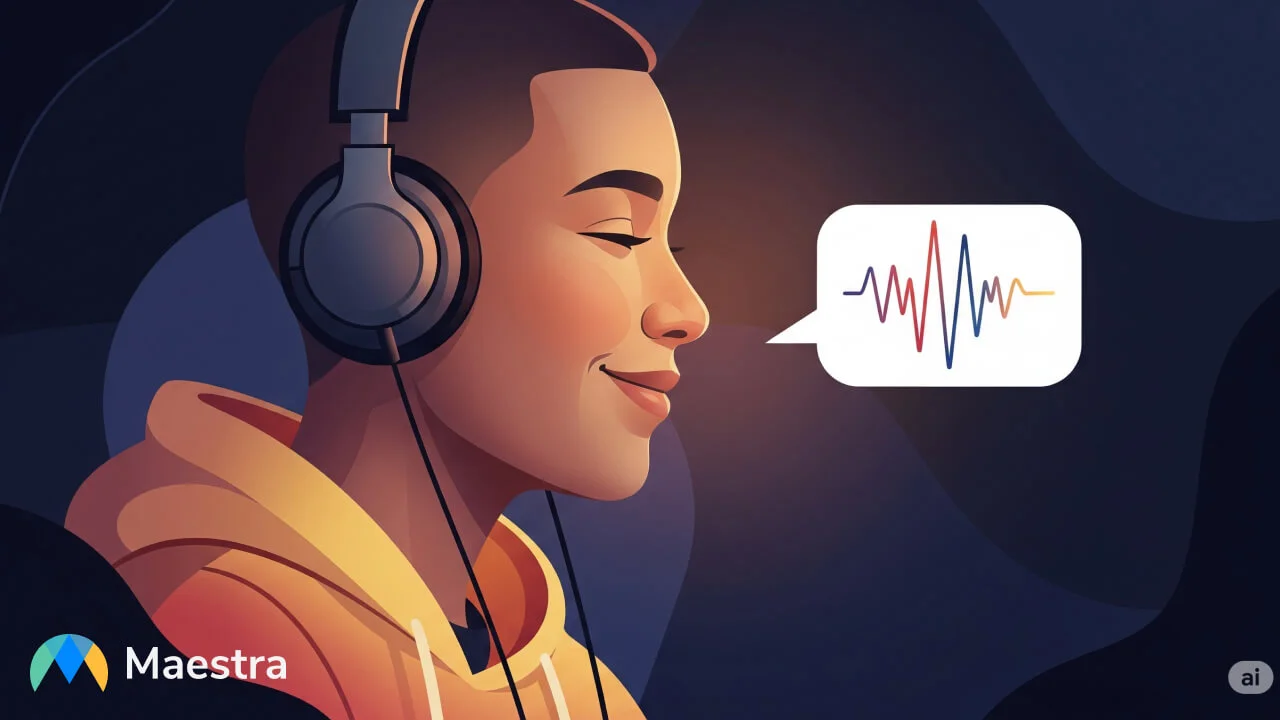
Text to speech (TTS), a technology that converts written words into spoken language, has come a long way since its early days of robotic, monotone voices. Advances in artificial intelligence and deep learning have transformed it into a system capable of producing natural, human-like speech that feels authentic and engaging.
In a world where users expect both convenience and personalization, TTS bridges the gap between text and voice. From improving accessibility to supporting content creators and businesses, it has become a vital part of how we consume and interact with digital content.
In this guide, we'll:
- Explain what text to speech is and how it works
- Benefits of using TTS technology
- Explore the top use cases across industries
- Share practical tips for choosing the right TTS tool
- Walk you through how to convert text to speech step by step
- List best practices to make audio sound natural
- Look ahead at the future of TTS and answer common questions
Let's get started.
What is text to speech technology?
Text to speech technology is a type of software that converts written text into spoken words. Instead of reading text on a screen, users can listen to it in a natural-sounding voice. It's used in everything from screen readers to voice assistants, language learning tools, and content creation, making information more accessible and convenient.
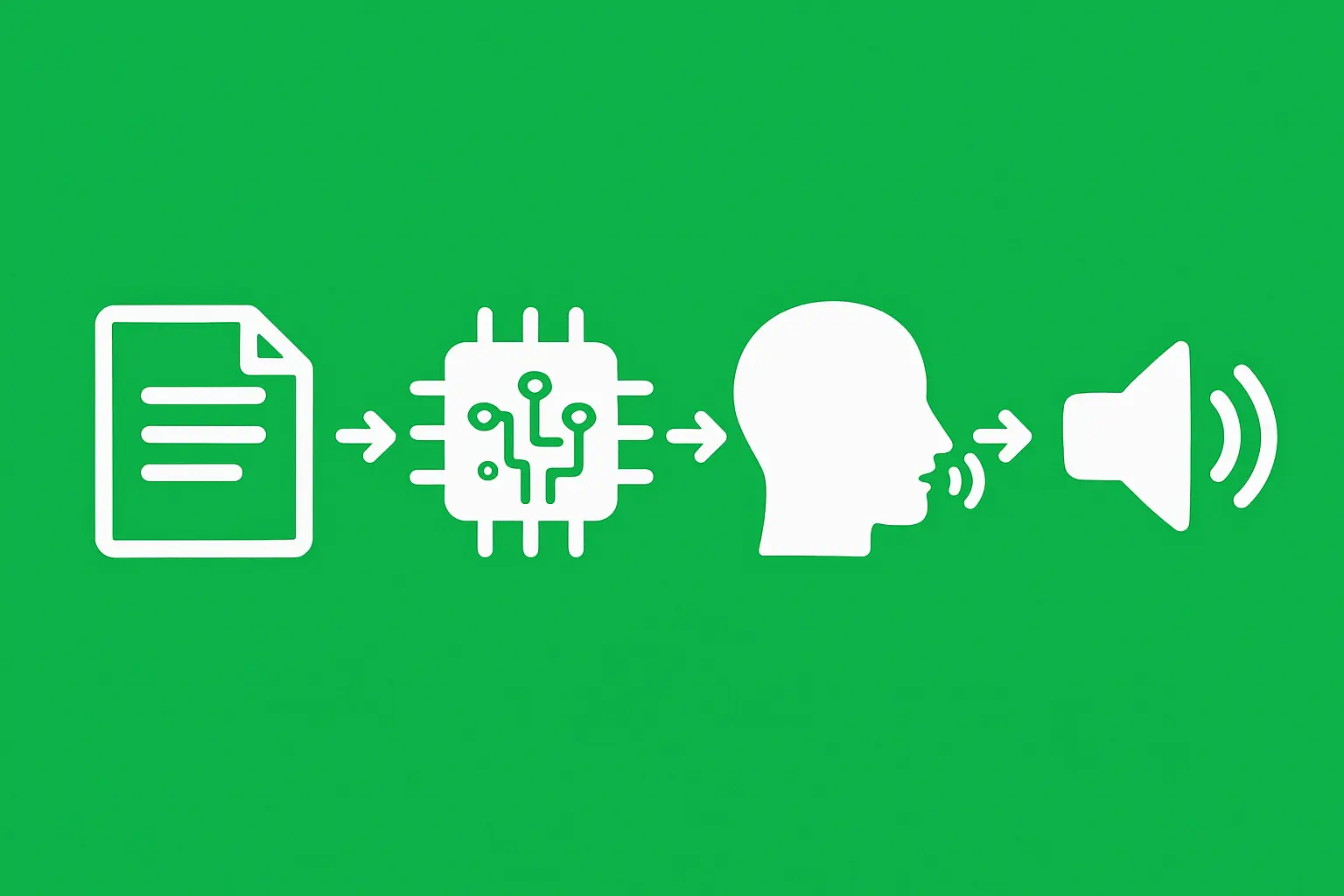
How does text to speech work?
At a high level, a text to speech converter works by processing the text, understanding its structure and meaning, and then generating audio that matches the intended pronunciation, tone, and rhythm. Modern tools use advanced AI, especially neural networks, to generate speech that sounds fluid and human-like. This combination of linguistic analysis and voice synthesis allows text to speech to deliver realistic, expressive speech in multiple languages and styles.
Benefits of Text to Speech Technology
Text to speech technology offers a range of benefits that go beyond simply reading text aloud. It empowers people, boosts efficiency, supports learning, and helps repurpose content in new and engaging ways.
Accessibility
TTS tools like Speechify make information available to people with visual impairments, dyslexia, or other reading difficulties. By converting text into clear, understandable audio, TTS systems ensure that everyone can access and interact with content equally.
Productivity
With TTS, users can listen to articles, reports, or emails while multitasking, turning otherwise idle moments into productive time. Personally, I prefer to listen to an article when commuting or taking a walk; an approach I've found not only reduces screen fatigue but also helps me absorb information on the go.

Learning and Education
TTS supports learners by reinforcing reading comprehension and pronunciation. Teachers and e-learning platforms can also use it to create engaging audio lessons and for diverse learning styles.
Content Repurposing
Written content like blog posts and scripts can be transformed into audio versions with TTS converters like Narakeet, expanding reach to audiences who prefer listening over reading. This opens opportunities for podcasts, narrated videos, or audiobooks without the need for costly voiceover production.
Top Use Cases of Text to Speech
As a versatile tool with a range of practical applications, text to speech is now integrated into our daily lives and various industries. Here are some of the most impactful ways it's been used today:
Assistive Technology & Screen Readers
TTS is a fundamental component of assistive technology, particularly for individuals with visual impairments, learning disabilities, or literacy challenges. It powers screen readers that read digital texts aloud, making websites, documents, and applications accessible to those who cannot read them visually.
Tip: If you're designing a website or app, make sure it follows accessibility guidelines like WCAG. You can integrate text to speech systems by embedding a TTS API directly into your platform to provide instant audio playback of on-screen text.
Customer Services & IVR Systems
In the realm of customer service, TTS is used to create dynamic and natural-sounding Interactive Voice Response (IVR) systems. Instead of relying on pre-recorded audio clips, businesses can use TTS to generate on-the-fly responses for menus, announcements, and personalized information like account balances.
Tip: When implementing TTS in IVR systems, choose a voice that aligns with your brand’s tone and ensure the speech output is clear and concise.
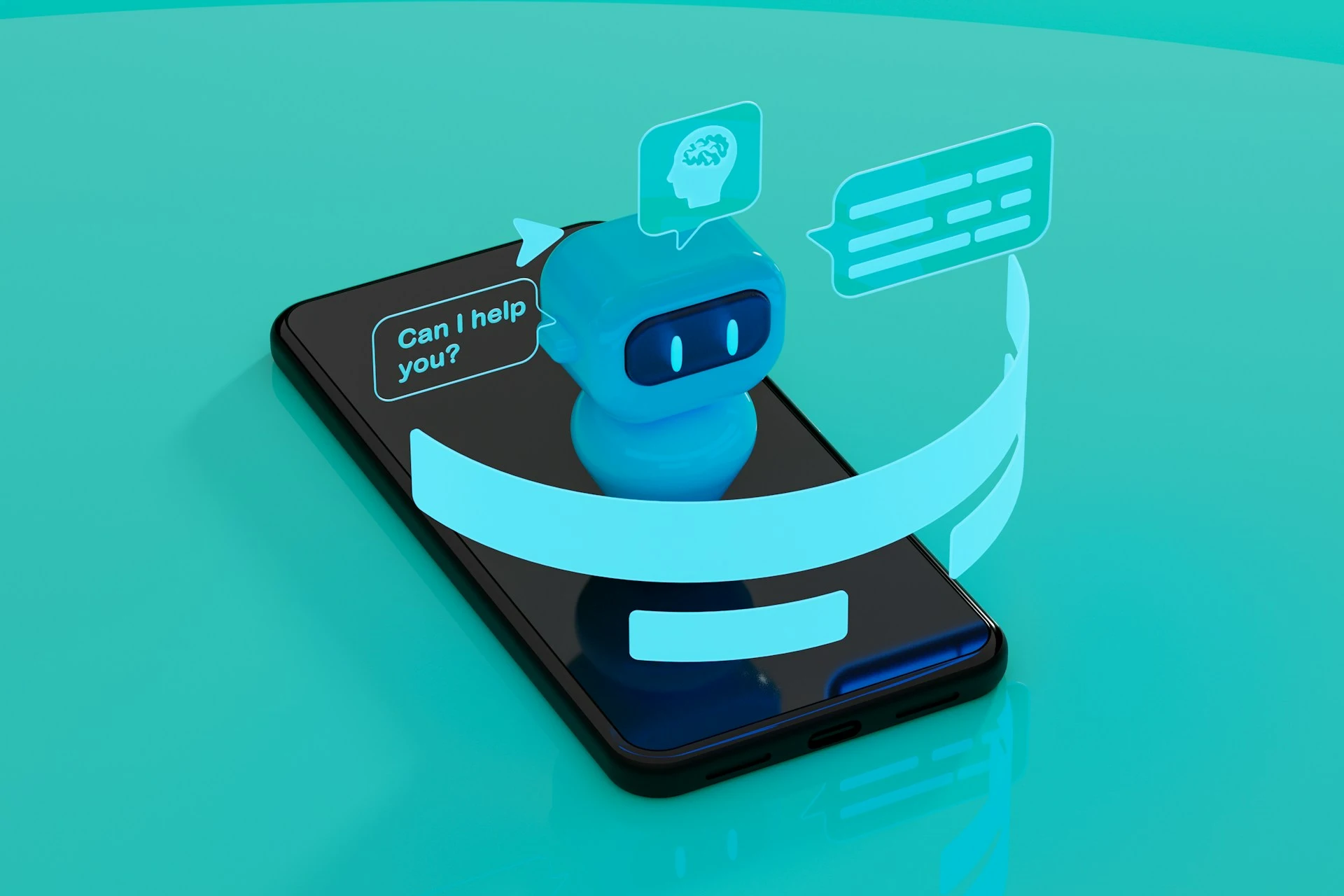
E-Learning Platforms & Training Materials
TTS is widely used in e-learning to transform written lessons, quizzes, and course materials into engaging audio. With multilingual TTS capabilities, training videos can also be adapted for global audiences, making it easier for companies to onboard their international employees.
Tip: Incorporate TTS into your e-learning platform with customizable options like voice selection, playback speed, and language preferences, so learners can tailor the experience based on their needs.
Content Creators & Media Production
For content creators such as YouTubers, podcasters, and bloggers, TTS offers a cost-effective way to create spoken content from written scripts. It allows for the rapid production of audio versions of articles, scripts for video narration, and even full audiobooks without the need for a professional voice actor or studio time.
Tip: If you want to leverage TTS in your short videos, learning how to do text to speech on TikTok can help you create captivating content in seconds.
How to Choose the Right Text to Speech Tool for You
Depending on your use case, the right text to speech software can make all the difference. Below are the key factors to consider when making your decision:
Voice Quality
The most important aspect of any TTS tool is how natural and clear the voices sound.
- Aim for solutions that closely mimic human speech to create a more authentic listening experience.
- Preview different voice options before committing to ensure they match your desired tone, style, and audience preferences.
- Test how the voice handles different types of content, such as technical terms, dialogue, or emotional passages.
Language and Accent Variety
If your audience is global or multilingual, a TTS tool with a wide range of languages and accent options is essential.
- Choose a platform that not only covers major world languages but also offers regional accents to better connect with specific markets.
- Look for tools that maintain consistent voice quality across languages, so your content sounds professional no matter where it’s heard.
- Consider whether the TTS service supports right-to-left scripts or non-Latin alphabetsif your content requires them.

Editing and Customization
The ability to fine-tune voice output is crucial for aligning the speech with your brand or project needs.
- Look for TTS tools that allow adjustments to pitch, speed, emphasis, and pauses to achieve the desired delivery.
- Some platforms offer pronunciation editors, which are invaluable for correctly voicing brand names and industry-specific terms.
- If you produce a variety of content types, choose a tool that supports multiple speaking styles(such as conversational, formal, or motivational) to match different contexts. Many TTS platforms also offer funny text to speech options, which can add personality and humor to lighthearted projects.
Security and Privacy
Security is non-negotiable, especially if your TTS tool will process sensitive or confidential content.
- Choose a platform that offers robust encryption for data both in transit and at rest.
- Review the provider’s privacy policy to ensure they clearly outline how your information is collected, processed, and protected.
- Verify whether the service complies with major data protection regulations such as GDPR, HIPAA, or SOC 2.
Integration and API
A great TTS tool should fit seamlessly into your existing workflows and platforms.
- Look for solutions that offer a well-documented API, making it easy for developers to connect the TTS service with apps, websites, or internal systems.
- Check whether the tool supports integrations with popular platforms such as learning management systems, customer support software, or content management systems.
- Ensure the API offers scalability so it can handle higher usage as your business or content production grows.
By weighing these factors carefully, you'll be equipped to choose the right text to speech converter for your needs. Remember: the best AI voice generators combine high-quality speech, customization, and security, giving you the flexibility to create engaging audio content across any project or industry.
How to Convert Text to Speech Step by Step
Now that you know what to look for in a text to speech tool, the next step is learning how to actually turn written words into natural-sounding speech. The good news is that most platforms make the process straightforward, even for beginners.
Personally, I've found that using Maestra's TTS tool makes this especially simple. Here are the steps for converting text into speech:
Enter Your Text & Generate Speech
- Go to Maestra's text to speech tool and enter your text to the designated area.
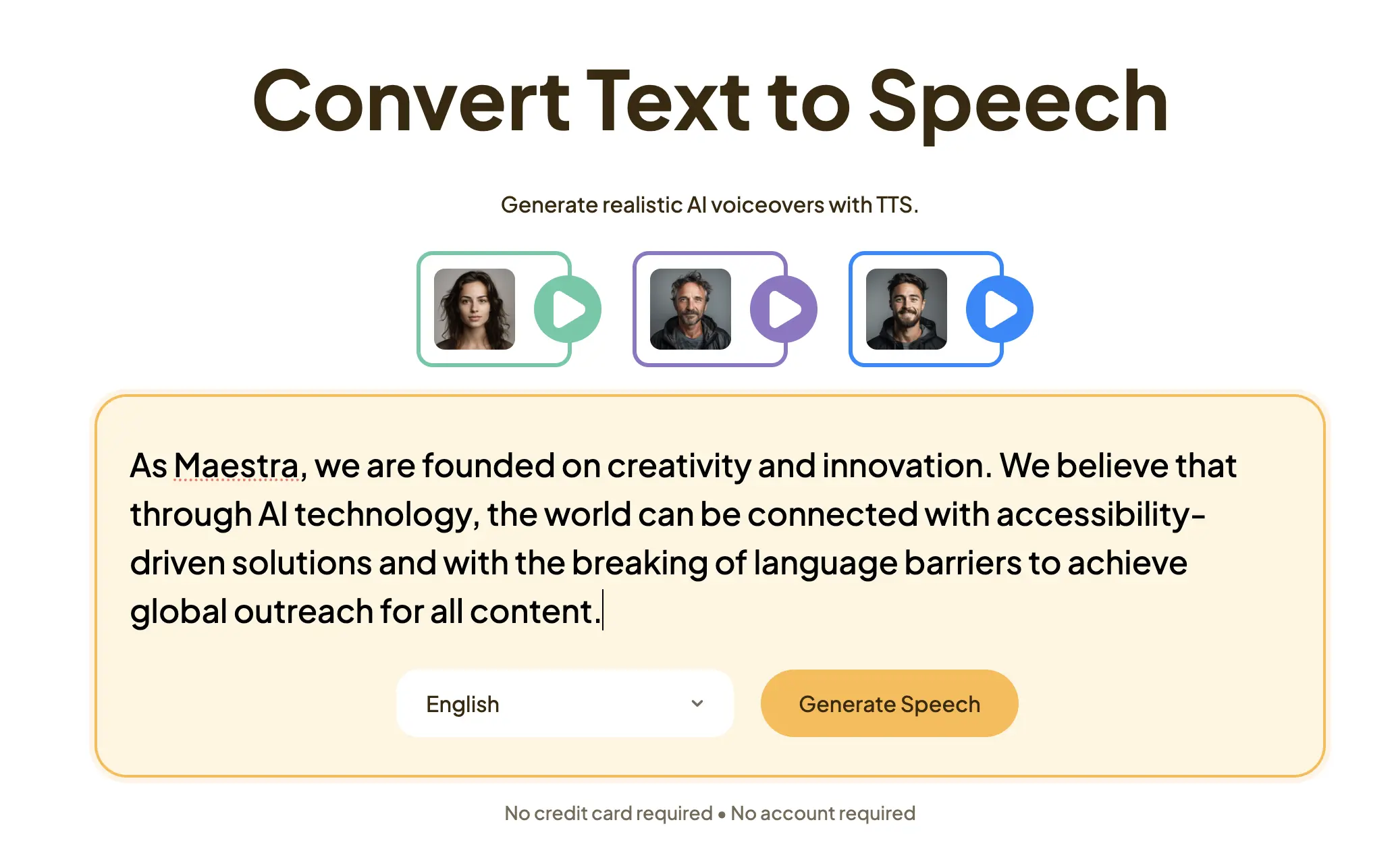
- Choose the language and click "Generate Speech" to begin the conversion.
- You'll be directed to the editor and a pop-up window will appear. Here you can browse and preview AI voices to find the one that best fits your content. You can filter voices by gender, expression, or dialect to match the tone you want to achieve. You can also choose different voices for different speakers.
🚀 Tip: If you're a Pro user, you can also clone your voice to maintain brand consistency and add a personal touch.
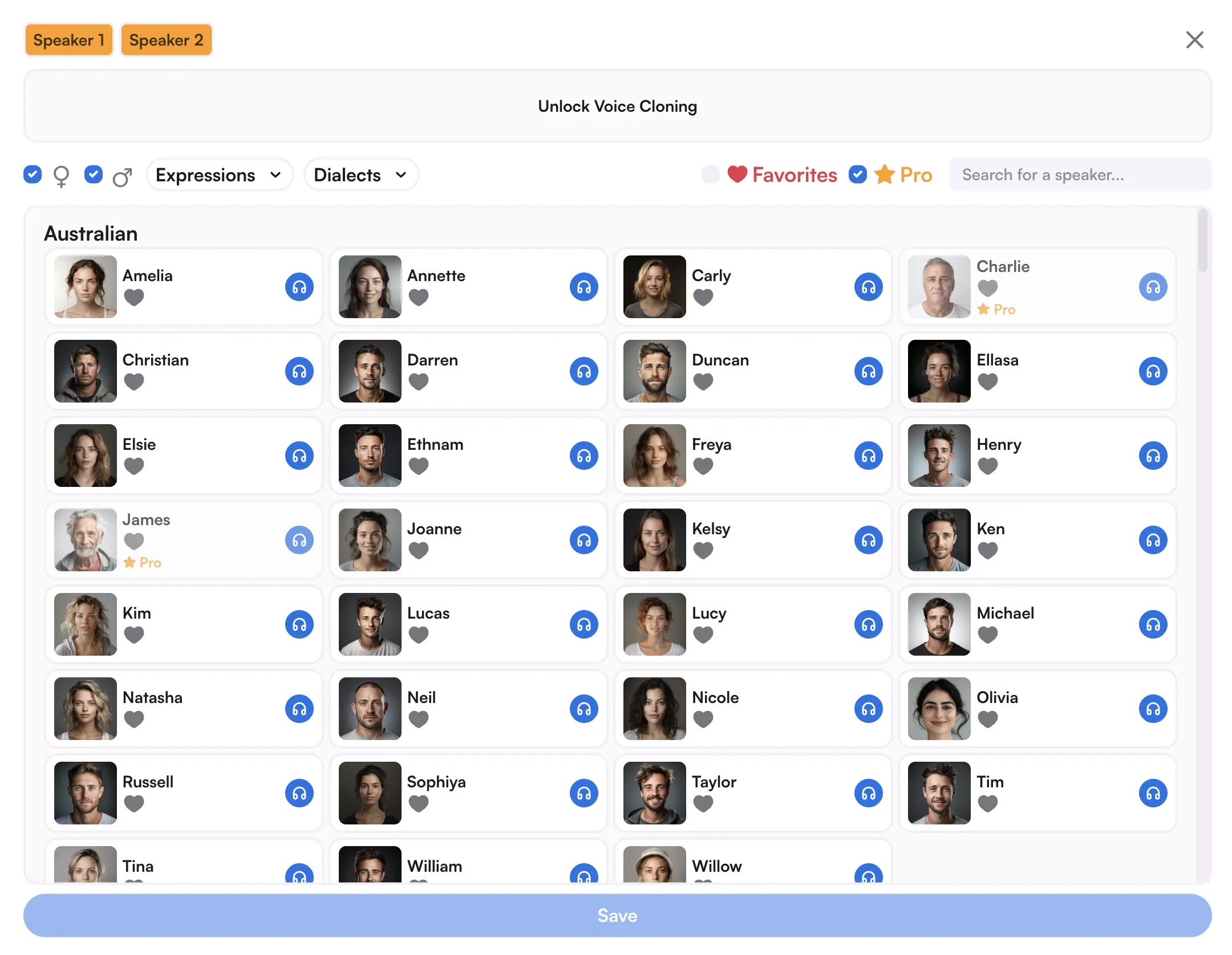
Preview & Edit
- Click "Voiceover" once you select a voice. Maestra will synthesize the audio, and the "AI Dubbing"button will turn green. Then click "Preview" to listen to the result.
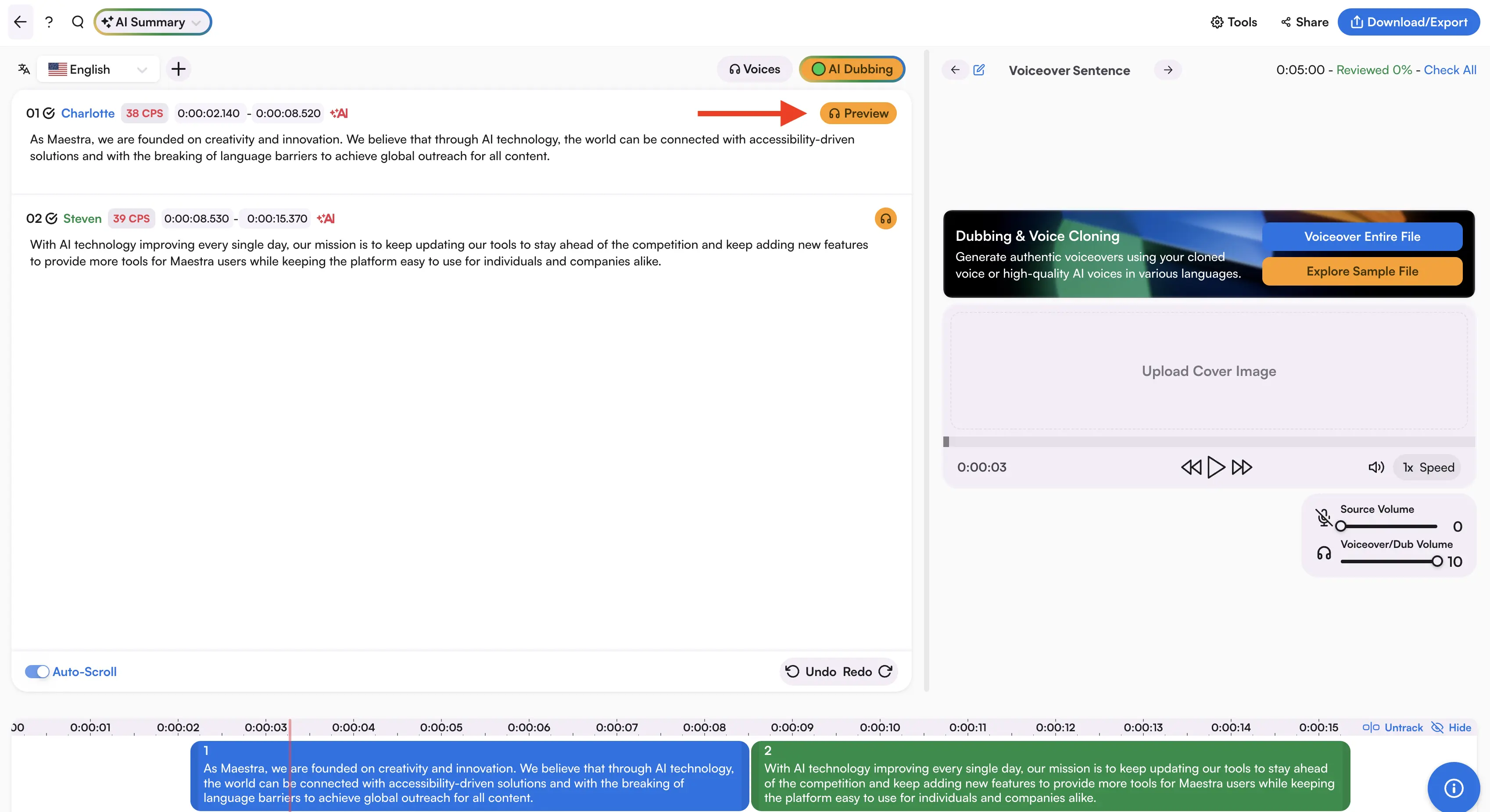
- In the editor, you can:
- Play the voiceover with the player on the right and adjust playback speed.
- Edit the text on the left (changes are instantly applied to the audio).
- Click "Voices" to test and switch between different AI voices.
- Click "Tools" to rearrange sentences.
- Use the (+) button to translate the text and voiceover into another language.
- Click "Check All" to review accuracy before finalizing.
Download & Share
- To download the audio file, simply click "Download/Export" in the top right corner. Choose "Media", then select "MP3" to save your file and start using it in your projects.
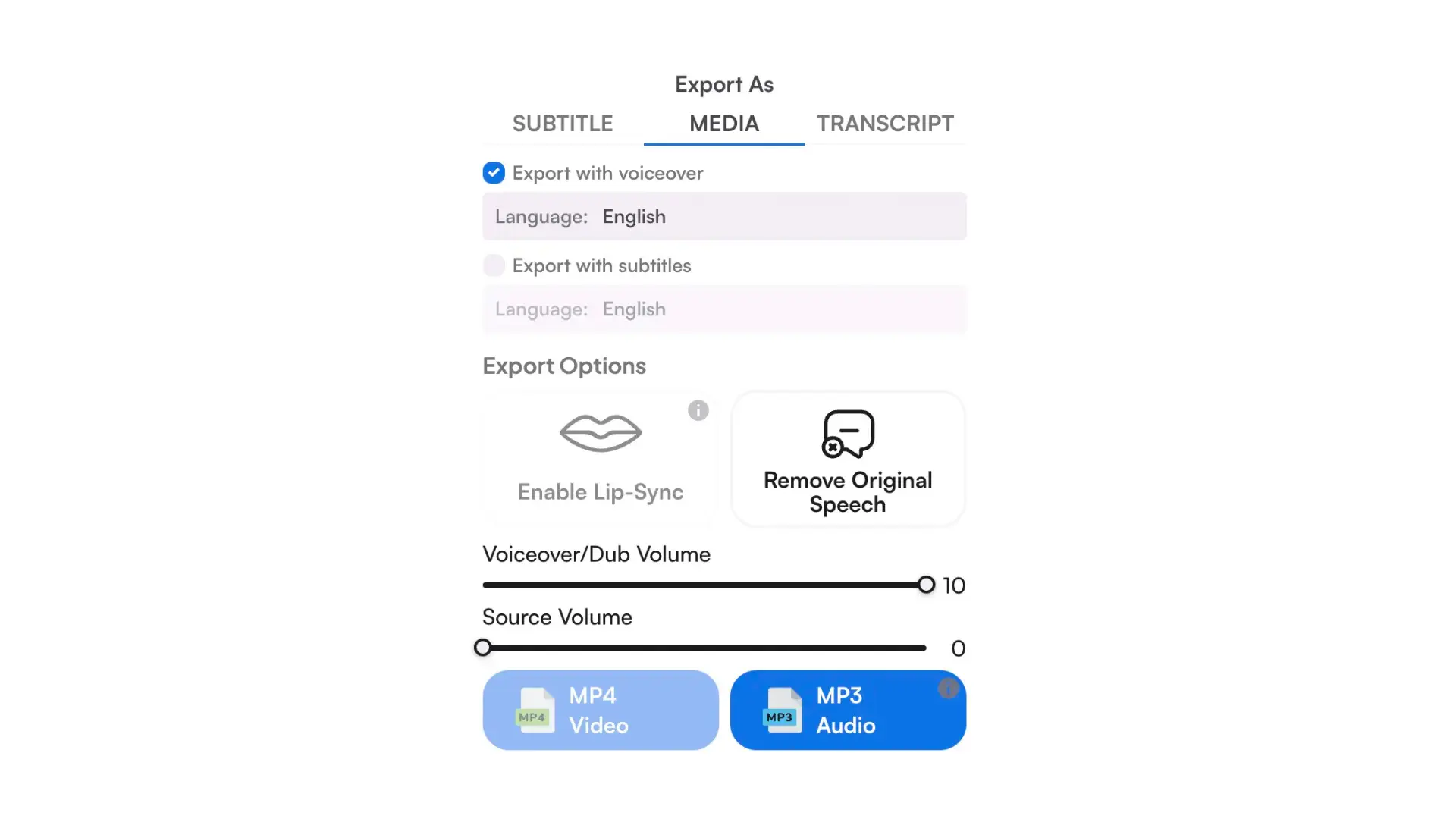
- To share the TTS project with other, click "Share" and generate a shareable link or invite others directly.
Summarize, Fact-Check & More
The "AI Summary" button in the top left might be my favorite feature, since it brings powerful tools like summarization, keyword extraction, chapter generation, sentiment analysis, quiz generation, and fact-checking, all in one place. These are especially helpful if you're working with long-form content, need quick insights, or want to repurpose the material into different formats more efficiently.
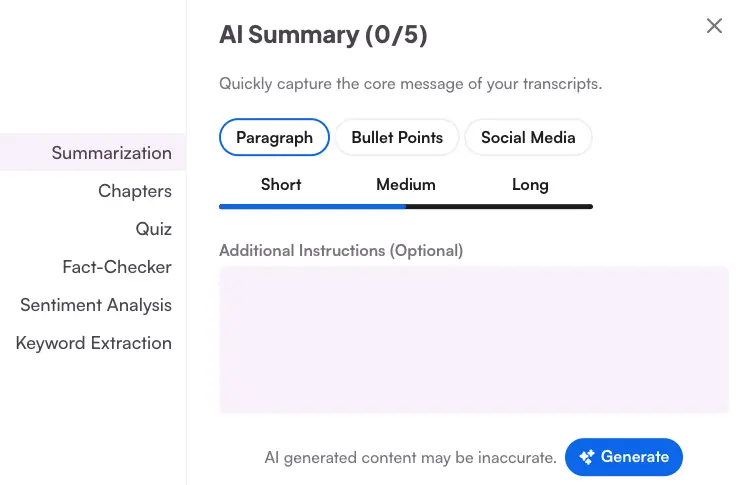
Best Practices for Converting Text to Speech
Converting text to speech is simple, but creating audio that truly sounds natural takes a bit more refinement. By following a few best practices, you can avoid common pitfalls and deliver a smooth, professional listening experience.
Text Preparation
- Keep sentences concise. Shorter sentences flow better in speech and reduce robotic intonation.
- Break up long paragraphs. Large text blocks can sound monotonous; splitting them improves rhythm and clarity.
- Use punctuation deliberately. Commas, periods, and ellipses help control pauses and pacing.
- Always proofread before generating audio. TTS tools will read exactly what's on the page, typos included.
Voice Selection
- Choose the right voice for your audience. Match tone, gender, and accent to the context (e.g., formal vs casual).
- Preview multiple voices. Listen to different options before settling on one; subtle variations can make a big difference.

Final Quality Check
- Check pronunciation of key terms. Use custom pronunciation if available, especially for brand names or industry jargon.
- Do a final listen-through. Play back the full audio to catch awkward phrasing, mispronunciations, or pacing issues before exporting.
- Test on different devices. Audio may sound different on headphones, speakers, or smartphones, so previewing across devices ensures quality.
- Gather listener feedback. Share your generated audio with colleagues or a small test audience to catch issues you might miss and refine delivery.
The Future of Text to Speech
As speech synthesis continues to advance, the role of text to speech in our daily lives is set to grow. Powered by artificial intelligence and deep neural networks, today's systems already sound close to human voices, and with ongoing progress in machine learning, the possibilities are expanding even further. From virtual assistants to gaming environments to real-time customer interactions, TTS is evolving from a utility into an immersive communication tool.
Real-Time Voice Generation for Live Interactions
One of the most transformative developments in TTS is the ability to generate speech instantly, without noticeable delay. This real-time voice generation enables a new class of applications, from live customer service calls where an AI can speak on behalf of a human agent to real-time voice translation where a person's voice can be instantly converted into another language while maintaining their unique vocal characteristics.
This advancement also has major implications for accessibility, providing live narration for people with visual impairments or speech challenges. By removing delays, real-time TTS ensures users can participate in conversations and events as they happen.
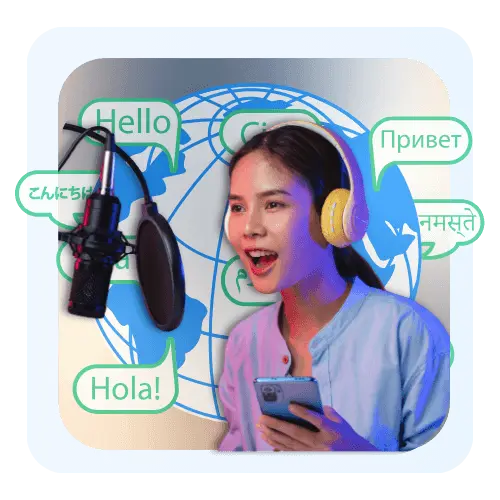
AI Personalization
In the future, AI personalization in text to speech will move far beyond voice customization; it will become a dynamic reflection of individual identity. TTS systems will learn to mirror not just how we speak, but why we speak the way we do.
Future TTS software may also adapt in real time to context and audience. For example, the same voice could shift from a professional, steady delivery in a business presentation to a warmer, more casual tone in customer support chat. This contextual understanding will make interactions feel more human, helping brands and individuals communicate with greater authenticity across different settings.
Expansion in AR/VR, Gaming, and Virtual Assistants
As immersive technologies continue to evolve, text to speech will play a more central role in shaping more lifelike digital experiences. In AR and VR environments, TTS can create dynamic dialogue for characters, narrate interactive tutorials, or provide real-time guidance, all without the need for pre-recorded audio. In gaming, this means richer storytelling and adaptive character voices that respond uniquely to player actions, making worlds feel more alive.
Virtual assistants will also benefit from these advancements, shifting from scripted, mechanical voices to conversational agents that understand context and respond with nuance. As speech becomes more natural and responsive, users will be able to interact with virtual assistants more fluidly, blurring the line between human and machine communication.

Conclusion
We've explained how TTS works, its benefits, how to utilize it, and the best practices to get the most out of this technology. Now, the next step is to start experimenting with it in your own projects, whether that's creating or consuming content, building an app, or simply making daily tasks more convenient. No matter your field, TTS offers a way to connect with people through sound. What once felt futuristic is now within reach.
Frequently Asked Questions
What is text to speech and how does it work?
Text to speech (TTS) is a technology that converts written text into spoken language, allowing users to listen to content instead of reading it. Modern AI systems rely on deep learning techniques to analyze text, understand context, and generate lifelike speech with natural tone and rhythm. This makes TTS sound closer to human voices than ever before, improving accessibility and user experience across many applications.
Is there a free text to speech AI?
Yes, there are several free text to speech AI tools that let you convert short amounts of text into audio. Some popular examples include Google Text-to-Speech, which comes built into many Android devices, and Microsoft Azure TTS, which offers a free tier for limited usage. For creators on social platforms, apps like TikTok offer built-in text to speech features at no cost.
What is the best text to speech software?
This depends on your specific needs such as voice quality, language variety, customization options, or integration capabilities. Strong contenders include Maestra, which offers lifelike voices with multilingual support, ElevenLabs for highly natural speech synthesis, Murf AI for content creators and professionals, and Amazon Polly for developers who need scalable API access. The best choice comes down to balancing your budget with the features most important for your projects.
What's the best way to make TTS sound more natural?
The best way to make TTS sound more natural is to start with clear, well-structured text input, since the system will read exactly what’s written. Using proper punctuation helps control pauses, pacing, and emphasis, which makes the speech flow more like human conversation. Finally, previewing different voices and adjusting settings like speed, pitch, and tone can significantly improve the naturalness of the output.
How do I handle pronunciation issues in text to speech?
Most text to speech platforms include pronunciation editors that let you control how specific words are spoken. You can create a dictionary of custom entries for names, jargon, or unusual spellings so the tool gets them right every time. By setting these rules once, you save valuable time and avoid repeated pronunciation errors.
How do I add text to speech to my website or app?
To add TTS to your site or app, start by choosing a platform that offers an API or plugin. Developers can connect the service to the front end so text fields, articles, or chatbots can instantly convert text into audio. With the right setup, you can also customize voices, adjust playback, and track usage.
Can text to speech work in real time?
Yes, real-time TTS is not only possible but quickly becoming a standard feature. Industries like customer support and healthcare use it to provide instant responses and guidance. Language learners can also benefit from hearing natural speech instantly, which helps with comprehension, pronunciation, and fluency.
Can TTS tools clone or create a custom voice?
Yes, many TTS tools can clone or create custom voices. This is done by training the system on recordings of a person’s speech to capture tone, pitch, and style. The more high-quality recordings provided, the more natural and accurate the cloned voice will be.
Is text to speech safe to use with sensitive or private data?
Yes, TTS can be secure, but it depends on the service you choose. Reputable tools use encryption and strict privacy controls to keep information safe. Always review the provider's policy to ensure your content isn't stored or shared without consent.
What are some common apps or services that use TTS?
Many mobile apps use TTS, such as Google Text-to-Speech on Android and Apple’s built-in VoiceOver on iOS. Platforms like TikTok and Instagram Reels include TTS to make short videos more accessible and engaging. Microsoft Word also supports TTS, allowing users to listen to their work hands-free.
Can ChatGPT do text to speech?
As of August 2025, ChatGPT itself is primarily a text-based AI and does not natively generate speech. However, it can be paired with external text to speech (TTS) tools to convert its responses into spoken language. This combination is commonly used in chatbots, voice assistants, and accessibility tools.
How can I turn text to speech on Android?
You can turn on text to speech on Android by going to Settings > Accessibility > Text-to-Speech Output. You can choose from different engines depending on your device, including Google’s, the manufacturer’s, or third-party options from the Play Store. Once enabled, supported apps and accessibility tools can read text aloud directly from your device.
